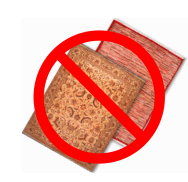 The Foreign Corrupt Practices Act (FCPA) is alive and thriving. The FCPA has become a monster (in keeping with our Halloween theme) of an obstacle for companies seeking to secure business from foreign governments. The FCPA penalizes companies and individuals for bribing foreign officials. The Department of Justice (DOJ) and the Securities and Exchange Commission (SEC) enforce the FCPA with increasingly devastating effect. Not only are these agencies vigorously prosecuting violators, they are also extracting huge settlements, often in the tens of millions of dollars and beyond. The SEC and DOJ are rumored to have well over one hundred active FCPA cases open at any one time. The scariest part about the FCPA is that is everything just mentioned is not the scariest part. The scariest part is that Congress just placed a bounty on violators. As part of the recent overhaul of our nation’s financial sector, Congress enacted a law to reward people who report FCPA violators to enforcement authorities. Whistleblowers can get up to 30% of fines that the SEC (and possibly the DOJ) collect over $1 million. Competitors and disgruntled employees are about get very rich very quickly. There is one hopeful development for would-be violators. The DOJ just released FCPA Advisory Opinion 10-3. It appears that the DOJ may be interpreting “foreign official” (an element under the FCPA) to allow some companies to possibly escape liability by taking certain precautions, including requesting an advisory opinion from the DOJ, following a recusal policy if suspect transactions surface, and alerting all parties of your preventative and remedial steps. The DOJ is not bound (or so it claims) to follow and apply current advisory opinions to future cases. Thus, the agency may not be so forgiving in future cases. Still, it may be worth your time to read FCPA Advisory Opinion 10-3 and follow the steps contained therein.
0 Comments
How do you appeal a penalty from the Bureau of Industry and Security (BIS) for perceived violations of the Export Administration Regulations (EAR)? Companies and individuals rarely challenge the BIS, preferring to negotiate a settlement. The courts get involved generally only if there are criminal indictments. But there is a mechanism to challenge the BIS when it imposes civil penalties, and everyone, including the Bureau of Industry, agreed that would be done by appealing to the United States Court of Appeals for the District of Columbia Circuit (the DC Circuit). You may not have heard of the DC Circuit, but it is one of our nation’s most influential courts because it directly decides appeals from federal agencies, skipping an appellant’s need to first go through a federal district court.
That arrangement/hierarch, however, was revised in Micei International vs. Department of Commerce, 613 F3d 1147 (C.A.D.C. 2010). The BIS imposed on Micei a $125,000 fine and a five-year suspension of export privileges, and, following the BIS’s instructions, Micei appealed to the DC Circuit. Apparently on its initiative, the DC Circuit decided that, because of the Export Administration Regulations convoluted history and questionable legitimacy (and thanks to a recent amendment to the regulations that this case triggered), it had no jurisdiction over the appeal, and transferred the case to the federal district court. Why is this important? Well, there is the issue of finality. Having a district court decide a case adds another level of adjudication and thereby increases the amount of time and money it will take to finally decide an export penalty case. Court decides that CBP cannot extend the thirty-day redelivery period without proper notice9/30/2010 Can US Customs and Border Protection (CBP) slap an importer with liquidated damages for failing to redeliver merchandise when CBP does not demand redelivery within the period required by CBP’s own regulations? Well, of course not, you would think. The answer is so obvious that no one in their right mind would waste the time and energy to argue against the point.
Cue US vs. Pressman-Guman, the latest case from the US Court of International Trade. The importer imported textiles. CBP issued a Request for Information (CF 28) to request samples from the importer. CBP wanted to review whether the importer properly classified the imported merchandise. When CBP received the samples, it sent two more CF 28s to the importer, informing the importer that CBP was extending the conditional release period by ninety days while CBP performed lab work on the samples. In other words, CBP claimed that it had an additional ninety days to decide whether to order the importer to return or redeliver the merchandise to CBP. About four months after it received the samples, CBP concluded that the importer misclassified the merchandise and improperly claimed quota. CBP demanded that the importer redeliver the merchandise into its custody, an impossibility given that the merchandise was already with the importer’s clients. CBP decided to impose $120,000 in liquidated damages against the importer’s bond. The importer refused to pay, and the CBP filed a lawsuit in the Court of International Trade. The Honorable Delissa A. Ridgway wrote the court’s opinion. She methodically reviewed the mountain of evidence in the importer’s favor before dismissing the lawsuit. One of the pieces of evidence is 19 CFR 113.62(d) which states that “any demand for redelivery ... be made no later than ... 30 days after the end of the conditional release period.” Judge Ridgway excoriates CBP for ignoring its own history in interpreting the regulation: This is an action that never should have been brought ... the Government here contends that individual Customs personnel at ports all across the country are empowered to redefine the concept and duration of the conditional release period “by unilateral fiat” and without explanation, as each individual sees fit, on a case-by-case basis, with no regard for consistency or predictability, effectively over-riding on a “one-off” basis virtually two full decades of Customs Headquarters rulings setting forth Headquarters' official, considered interpretation of the agency's regulations governing the timing of the issuance of demands for redelivery. Merely to state the proposition is to refute it. Judge Ridgway’s biggest criticism is directed not at the CBP staffer who extended the thirty-day redelivery period. Instead, Judge Ridgway directs her derision at CBP officials and government attorneys who decided to press their claim in court: However, while ignorance might (in some measure) excuse the actions of an individual Customs staffer working out in the “field,” it does nothing to explain the agency's subsequent determinations, much less the decisions of counsel to press an untenable position in litigation. Judge Ridgway’s opinion is undoubtedly reverberating within CBP, and it would behoove the agency to be more carefully to actually follow its own regulations, rulings, and public pronouncements. Not only was CBP’s lawsuit bereft of logic, it needlessly consumed a decade’s worth of time and money for all parties involved. Judge Ridgway concedes that CBP, like all other federal agencies, has a right to change its policies and regulations, but can do so only in accordance with the law, presumably by following the public notice and comment procedures that all federal agencies must follow. Judge Ridgway’s opinion should help importers keep CBP honest regarding the interpretation and enforcement of CBP’s regulations. Halloween (which is just around the corner, judging by all the pumpkins at the grocery stores) may be just the right holiday to consider a ghoulish question that confounds importers in regards to section 9802 of the HTSUS. As you may know, 9802 allows an importer to avoid paying duties on merchandise that was exported, as long as the merchandise was enhanced (advanced in value or improved in condition) overseas. If the merchandise qualifies, the importer pays duties solely on the value of the enhancements.
Halloween at the gut level deals with transformation, typically from good to bad or, if not bad, at least to outcast or mischievous. People wear costumes to make the change temporary and superficial, but the fun stories touch a darker reality. People transform into zombies, werewolves, vampires, and even monsters created by evil geniuses or possessed by demons. Think Doctor Jekyll and Mister Hyde, The Fly, and The Exorcist. The stories would not work and would not stir something in us, however, if the hope for redemption was absent. Will the monster ever turn back into a human? Or has he/she turned irretrievably into something completely inhuman, something so different that it no longer deserves all the protections and benefits that we guarantee solely to our fellow humans? Back to 9802. To qualify for duty savings under this provision, you must export an item to get it improved or enhanced in the foreign country. However, while improvements or enhancements are required, you must keep a tight leash on them. You cannot bring back a completely new item. I call this the Six Million Dollar Man paradox. Turn the way-back machine to the 1970s. Steve Austin, aka the Six Million Dollar Man, aka the Bionic Man, is injured in a terrible accident. A secret, government-funded medical team saves his life by replacing his broken body parts with robotic or bionic parts. They improve him. They make him better. They replace one eye and one ear drum with an infrared scanner and an electronic earpiece. He is still Steve Austin, human. They give him nuclear powered legs and arms. He is still Steve Austin. If memory serves (I have not watched the show in over three decades and barely even then), the upgrades stopped there. But what if they continued to replace body parts? What if they replaced his torso with a gigantic iPad and on and on you, removing slices of his anatomy and replacing them with shining steel and electronic circuitry. At some point, he will no longer be Steve Austin, but instead will be something else irretrievably. What is that point? Questions like that are normally the province for philosophers and science fiction fans, but US Customs and Border Protection daily decides similar, albeit more prosaic, questions regarding 9802 items. We attorneys often fight to convince CBP that the items have not transmogrified while in a foreign land into something more sinister. Who knew import law could be so spooky? It will be illegal to import Persian Rugs and Iranian foodstuffs starting September 29, 20109/6/2010  As promised, President Obama is using economic sanctions to pressure Iran into surrendering its nuclear ambitions. Imported Persian rugs and foods stuffs take the latest hit. On August 12, 2010, the Office of Foreign Assets Control issued this memo that explains the repeal of 31 CFR 560.534: OFFICE OF FOREIGN ASSETS CONTROL Guidance Regarding Import Prohibitions Imposed by the Comprehensive Iran Sanctions, Accountability, and Divestment Act of 2010 On July 1, 2010, the President signed into law the Comprehensive Iran Sanctions, Accountability, and Divestment Act of 2010 (the "Act"), which, among other things, prohibits the importation of Iranian-origin goods and services into the United States, effective 90 days after the Act's date of enactment. No exception to this prohibition may be made for the commercial importation of Iranian-origin goods described in section 560.534(a) of the Iranian Transactions Regulations (31 C.F.R. Part 560). The Office of Foreign Assets Control cannot authorize by general or specific license the commercial importation of such Iranian-origin goods (which include certain foodstuffs and carpets) on or after September 29, 2010. Consequently, the general license in section 560.534 of the ITR will be eliminated by September 29, 2010, and any such goods for commercial importation into the United States must be entered for consumption before that date.  Ok, so a guillotine may be just slightly over the top, but it is undeniable that the federal government is enforcing trade with extreme rigor, as seen from our survey results of penalty cases just from the past month. You can see the results from the table we prepared (see below) which captures only a small percentage of recent penalty cases. The agencies involved are the US Department of Justice, Office of Foreign Assets Control, Securities and Exchange Commission, US Department of State, and the Bureau of Industry and Security. Not shown are the import penalty cases imposed by US Customs and Border Protection, the FDA, and other agencies. Adding import penalty cases (if federal authorities ever released that information) would stretch this table to several pages. The penalty amounts total about $400 million, but do not and cannot reflect all the real costs that a violator company must shoulder to deal with compliance emergencies. Companies applying for C-TPAT certification must complete a supply chain security risk assessment and report the findings to CBP, and companies enrolled in C-TPAT must complete and report risk assessments annually. The problem has always been that CBP never properly explained how to conduct these risk assessments.
Now it has. US Customs and Border recently outlined a Five Step Risk Assessment Process. While not required to follow them blindly or at all (because “The C-TPAT program clearly understands there are a wide variety of business models”), companies applying to C-TPAT would be smart to hew as closely as possible to the five steps to increase their chances of getting certified, and companies already in C-TPAT should do the same to avoid putting their certification at risk. CBP claims that the five steps are not new, but if not new, the information has never before been set out so clearly. In exchange for providing a “how to,” it certainly appears that CBP is expecting a great deal more from C-TPAT members. C-TPAT is no longer for companies that treat supply chain security with armchair indifference. For example, you are now supposed to grade the threat level of your sourcing country based on six indicia:
You must assign a grade, or at least find a way to measure, the threat level. CBP suggests the following grades: Low Risk - No recent incidents/intelligence/information. Medium Risk – No recent incidents/some intelligence/information on possible activity. High Risk – Recent incidents and intelligence/information. While CBP offers a list of free resources to help you assess the threat level to your supply chain, it is clear that your company must expend a great deal of energy and resources collecting and analyzing intelligence on each country that you source from and on every entity in your supply chain. It is hard to imagine that companies will be able to do this on their own without the assistance of legal experts and consultants. All C-TPAT members (brokers, consolidators, carriers, etc.), not just importers, are expected to abide by the five steps as much as possible. Small companies are not excused, and importers cannot rely on INCOTERMS to get around having to control and ensure supply chain security. The five steps emphasize that subcontracting logistics and transportation increases your threat level and requires that you take additional due diligence steps to control your “business partners” (a C-TPAT term that does not have the same limited meaning as the legal term). Many international shipments are handled by third party logistics providers who, in turn, may further contract out transportation companies. The five steps do not describe how these companies would remedy the supply chain failing of “business partners,” but do suggest that education plays an important part. Some 3PLs also do not qualify for C-TPAT because they “double broker” and do not own any of the warehousing facilities or means of transportation. The five steps provide wiggle room for companies that have not quite achieved all the C-TPAT criteria, but are committed to making improvements by “prescribing corrective actions with follow-up procedures to ensure weaknesses have been mitigated.” CBP prepared an FAQ and a memo on how to do an a risk assessment. The publication offers five sample templates or checklists to help you make sure you are on target. Here are the five steps:
|
Oscar Gonzalez
Principal and a founding member of GRVR Attorneys. Archives
September 2016
Categories
All
|
- Home
- Who we are
-
Our Practice
- Customs and Import
- 301refunds
- Export
- Litigation
- Section 232 and 301 Tariffs
- Outsource Your Classification
- CBP Audits
- Fines, Penalties, Forfeitures, and Seizures
- Customs Brokers
- C-TPAT >
- Foreign-Trade Zones
- Antidumping and Countervailing Duties
- Intellectual Property RIghts
- Foreign Corrupt Practices Act
- Manifest Confidentiality
- Contracts and Incoterms
- False Claims Act and Whistleblower
- Blog
- Resources
- Calendar and Events
- Best Customs Broker Exam Course
- Contact
 RSS Feed
RSS Feed
